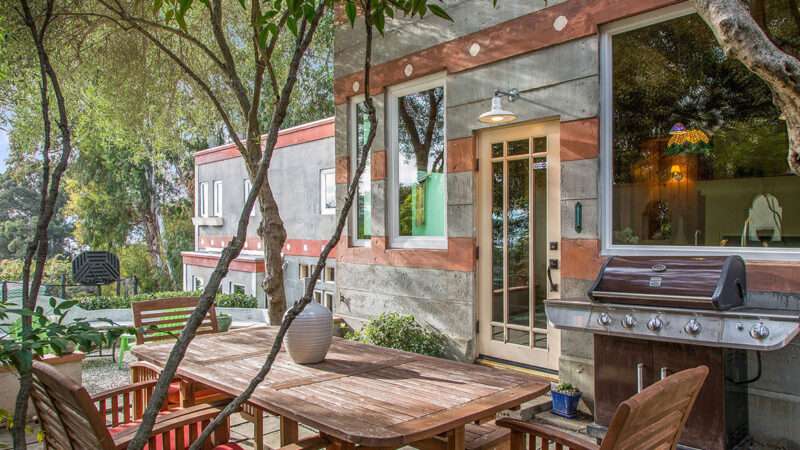
Imagine a federation of independent regions. Each of its cities is a mosaic of distinctive, self-governing neighborhoods, where “people can choose the kind of subculture they wish to live in, and can still experience many ways of life different from their own.” Homes and workplaces sit side by side, and those workplaces are a mix of owner-operated businesses and self-managed workshops. Bureaucracy is minimal, and services are administered in small offices without red tape.
Children roam the city freely, and the playgrounds are filled with raw materials for kids to build with. Instead of compulsory schooling, there are voucher-funded “networks of learning”: freelance instructors, shopfront schools, apprenticeships, museums. Instead of conventional universities, there are scholarly marketplaces where anyone can offer classes to willing customers. The most important mode of public transportation is a jitney-style fleet of mini-buses. One part of town is a permanent carnival. There are public bandstands, so people can dance in the street.
It is one of the least sterile, most appealing utopian blueprints I have read—tucked away, improbably, in a book about architecture. The book is A Pattern Language, published in 1977. Six names appear on its cover, but the text is most closely associated with the first author listed: Christopher Alexander, who died in March at 85.
One thing that makes this vision so appealing is that it’s less interested in telling people how to live than in maximizing their ability to live the lives they want. But it’s still a blueprint, and at times it can’t help feeling prescriptive.
While Alexander’s thinking evolved over the course of his life, he consistently believed that good design principles are encoded in the world and waiting to be discovered. These universal patterns, he stressed, are broad principles, not rigid instructions: ideas that you can use “a million times over, without ever doing it the same way twice.”
A Pattern Language lists 253 of them. It begins at the most macro level, with those independent regions, then gradually narrows its way through ever-smaller social institutions before finally discussing individual buildings. By then, the utopian speculations have given way to practical advice on shaping a comfortable living space.
Much of this advice is great. Who could deny that “young children seek out cave-like spaces to get into and under,” and that a home with kids should accommodate that? Or that “cupboards that are too deep waste valuable space, and it always seems that what you want is behind something else”? (Alexander’s calls for a participatory construction process are similarly attentive to human-scale touches. His 1985 book The Production of Houses recommends a “barrel of beer at the end of every operation.”)
But then there’s pattern number 138: “Sleeping to the East.”
Don’t want the sun to wake you? You’re not alone: “This is one of the patterns people most often disagree with,” wrote Alexander and company. “However, we believe they are mistaken.” A healthy sleep cycle, they tell us, demands a solar waking.
Alexander’s books do not usually take a we-know-best tone. Their general spirit is anarchistic: In 1983, Nomos magazine even reprinted part of A Pattern Language under the headline “Libertarian Architecture.” As the Danish designer Per Galle once said, Alexander aimed to give nonarchitects “control over their physical environments (apparently leaving little or nothing for the professionals to do).” But if you’re sensitive to sunlight or fond of sleeping late on weekends, this insistence on eastern exposure will sound awfully imperious.
The social institutions in the book sometimes veer in that direction too, with the authors offering ideas about enacting their patterns through the law. Sometimes that just means striking down existing rules or building basic infrastructure in a way that facilitates free action. But other times, A Pattern Language issues commands. Do not merely allow city land and farmland to interlock; make sure those agricultural strips are only a mile wide. Don’t just avoid parking minimums; impose a parking maximum. Don’t let people live in buildings more than four stories tall. Suddenly, the man searching for Platonic forms is barking orders like a Platonic government.
Alexander isn’t the first thinker to get caught between the ideal of a grand system and the ideal of a spontaneous order. Fortunately, we don’t have to buy the whole blueprint. Give me those bandstands and networks of learning. But on Saturday morning, let me recline in a fifth-floor bedroom facing west.
The post Christopher Alexander's Utopian Blueprint appeared first on Reason.com.
from Latest https://ift.tt/cw917FV
via IFTTT